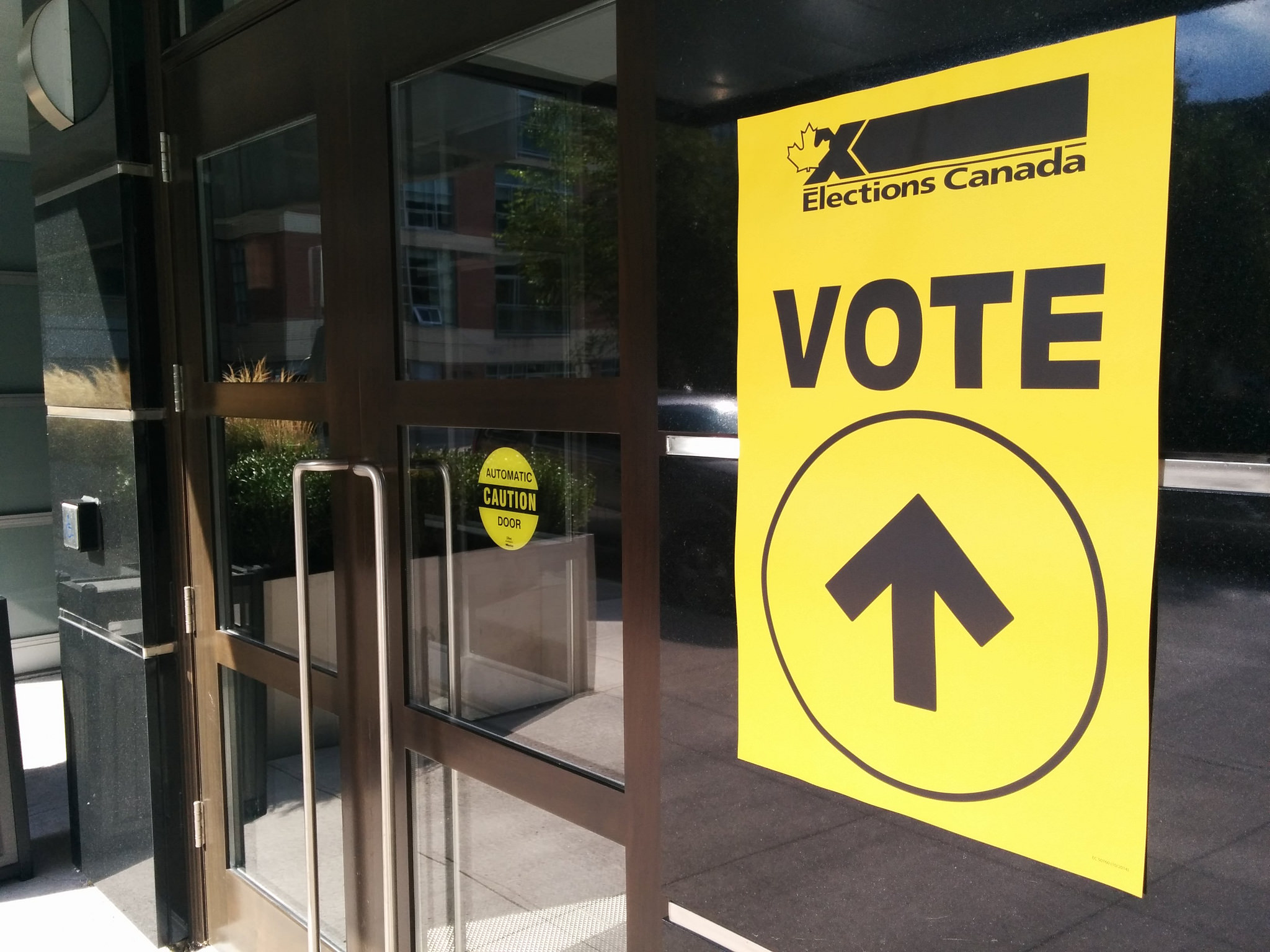
Remarking on Andrew Scheer’s statement that modern convention grants the party with the plurality of seats the first opportunity to form government, Dr. Thomas retorted that “the constitutional convention is that the incumbent gets the first right to form government.” Unfortunately, most Canadians are unaware of the prerogatives involved in which party gets to form government in a minority scenario.
Currently the Eakin Scholar at the McGill Institute for the Study of Canada, Dr Thomas, a McGill alum, teaches at the University of Calgary. Her research focuses on the many ways gender rears its head in Canadian politics, from candidate nominations to female voter turnout. However, her soft spot will always be for analyzing Albertan politics.
Masculinity, Oil, and Alberta
In Alberta, the Conservatives are set to win a solid majority of federal seats, business as usual for the party which is soaked in pro-oil masculinity. The gender gap in the economy is stronger in Alberta than anywhere else: the oil boom has benefitted white men, while women take home smaller earnings in less volatile jobs markets. It has shaped political discourse in the province: oil is seen as a precursor to entrepreneurship.
This has become especially clear under Kenney’s new government. The discourse on oil is fatalistic: without oil, there is no Albertan economy. This perspective is problematic as it fails to see that Albertans – like all Canadians – can be entrepreneurial with or without the ‘frontier land.’ The discourse becomes particularly paradoxical when the Albertan government says Canadians in the Atlantic provinces suffering from poor employment simply need to move to where there are jobs, while Alberta does everything it can to prop up jobs in the dying oil sector.
Of course, not all Albertan voters subscribe to the discourse of provincial leaders. In terms of divides in opinion, gender is a key determinant of attitudes towards climate change and market liberalism. “Women do care about climate change more than men do,” said Dr. Thomas.
In general, “women are less likely to be socially conservative; this contributes to the gender gap in vote choice on the right and on the left. Women are a little bit more skeptical of market liberalism than are men. So women are more likely to split their votes between the Liberals and the NDP. Men are more likely to split their votes between the Liberals and Conservatives.”
The masculinity associated with oil and the West reaches well into federal politics. Comparing the 2019 campaign to the 2015 election, Dr. Thomas commented on the requirements for a leader to be a feminist.
In 2015, Stephen Harper set a low bar. He repeatedly allowed backbenchers to bring forward anti-abortion proposals and hollowed out Canada’s funding for women’s advocacy groups. Pink-shirt wearing and well-coiffed Trudeau was received as a beacon of hope in that context.
Today, however, Trudeau’s inability to articulate why he is a feminist and why feminism is important, alongside his failure to understand why blackface is bad, have reduced his image, says Dr. Thomas. In 2019, Jagmeet Singh is leading the pack on likeability.
Barriers to Women Entering Politics
This election, more women are running as candidates than ever before. Even so, don’t get your hopes up about female representation in the House, advises Dr. Thomas. Female candidates tend to be placed in ridings where their party has little chance of winning. Rather than praising parties for the overall proportion of candidates who are women, Dr. Thomas says we should focus our assessments on “the difference in the ratio between the proportion of women nominated and the proportion of women they elected.”
Theories of the barriers to women’s successful entry into politics vary. One hypothesis suggests that incumbents tend to be men and tend to remain in office for long periods, reducing the number of available seats. [1] In order to increase the number of women, parties should simply run more women in such ‘safe seats’. However, women incumbents tend to be held to a higher standard than their male counterparts and parties tend not to run women in party strongholds. Thus, the gender gap in parliament fails to be bridged.
An interesting research finding shows that when more women candidates are elected, the overall qualifications of the legislature tend to rise. [2] Part of the reason for this is that women politicians are held to a higher standard and therefore tend to be more qualified than their male counterparts. Dr. Thomas currently has research under review investigating associations between masculinity and political jobs. Using an implicit association test, the preliminary findings show that women do demonstrate this bias, while men do not. This might imply that women are aware of the bias against them, while men are not.
While the gender makeup of the House of Commons may not be changing in the near future, the leadership of major federal parties might see a shift soon. Dr. Thomas agrees with several of her colleagues that Trudeau is likely to move aside before the next election, making room for someone else to lead the Liberals.
In terms of predicting tomorrow’s election, Dr. Thomas thinks we can expect a minority government led by the Liberals and supported by the NDP. On why this is unlikely to be a formal coalition, Dr. Thomas explained that “we don’t do coalitions in Canada, actually inviting another party into you cabinet” doesn’t really happen.
Edited by Evelyne Goulet.
Bibliography
- Stanley M. Caress, “The Influence of Term Limits on the Electoral Success of Women,” Women & Politics 20, no. 3 (September 17, 1999): 45–63, https://doi.org/10.1300/J014v20n03_03.
- J.H Black and L Erickson, “Women Candidates and Voter Bias: Do Women Politicians Need to Be Better?,” Electoral Studies 22, no. 1 (March 2003): 81–100, https://doi.org/10.1016/S0261-3794(01)00028-2.
The opinions expressed in this article are solely those of the author and they do not reflect the position of the McGill Journal of Political Studies or the Political Science Students’ Association.
Image by Ishmael N. Daro via Flickr Creative Commons.